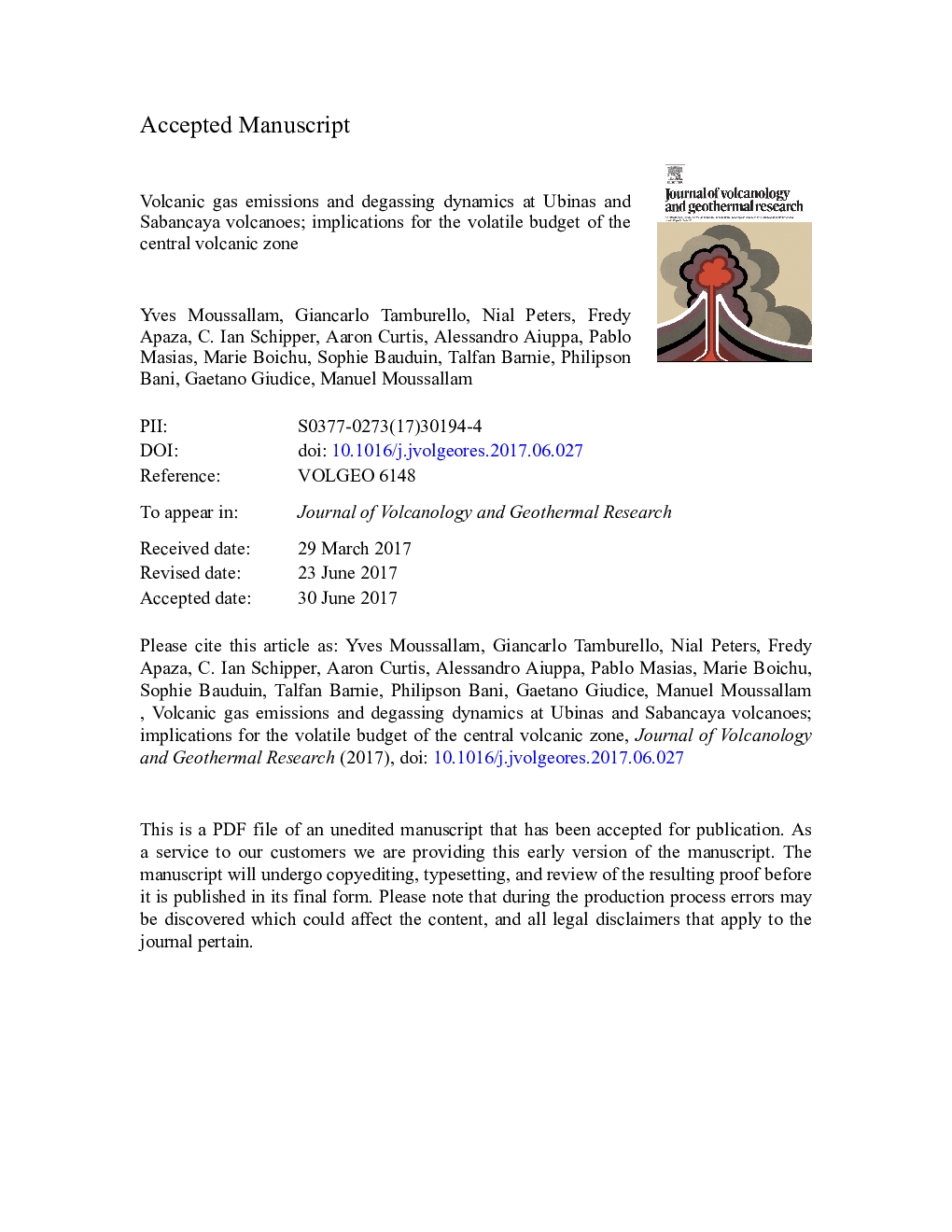| کد مقاله | کد نشریه | سال انتشار | مقاله انگلیسی | نسخه تمام متن |
|---|---|---|---|---|
| 5783696 | 1638280 | 2017 | 33 صفحه PDF | دانلود رایگان |
عنوان انگلیسی مقاله ISI
Volcanic gas emissions and degassing dynamics at Ubinas and Sabancaya volcanoes; implications for the volatile budget of the central volcanic zone
دانلود مقاله + سفارش ترجمه
دانلود مقاله ISI انگلیسی
رایگان برای ایرانیان
کلمات کلیدی
موضوعات مرتبط
مهندسی و علوم پایه
علوم زمین و سیارات
ژئوشیمی و پترولوژی
پیش نمایش صفحه اول مقاله

چکیده انگلیسی
Emission of volcanic gas is thought to be the dominant process by which volatiles transit from the deep earth to the atmosphere. Volcanic gas emissions, remain poorly constrained, and volcanoes of Peru are entirely absent from the current global dataset. In Peru, Sabancaya and Ubinas volcanoes are by far the largest sources of volcanic gas. Here, we report the first measurements of the compositions and fluxes of volcanic gases emitted from these volcanoes. The measurements were acquired in November 2015. We determined an average SO2 flux of 15.3 ± 2.3 kg sâ 1 (1325-ton dayâ 1) at Sabancaya and of 11.4 ± 3.9 kg sâ 1 (988-ton dayâ 1) at Ubinas using scanning ultraviolet spectroscopy and dual UV camera systems. In-situ Multi-GAS analyses yield molar proportions of H2O, CO2, SO2, H2S and H2 gases of 73, 15, 10 1.15 and 0.15 mol% at Sabancaya and of 96, 2.2, 1.2 and 0.05 mol% for H2O, CO2, SO2 and H2S at Ubinas. Together, these data imply cumulative fluxes for both volcanoes of 282, 30, 27, 1.2 and 0.01 kg sâ 1 of H2O, CO2, SO2, H2S and H2 respectively. Sabancaya and Ubinas volcanoes together contribute about 60% of the total CO2 emissions from the Central Volcanic zone, and dominate by far the total revised volatile budget of the entire Central Volcanic Zone of the Andes.
ناشر
Database: Elsevier - ScienceDirect (ساینس دایرکت)
Journal: Journal of Volcanology and Geothermal Research - Volume 343, 1 September 2017, Pages 181-191
Journal: Journal of Volcanology and Geothermal Research - Volume 343, 1 September 2017, Pages 181-191
نویسندگان
Yves Moussallam, Giancarlo Tamburello, Nial Peters, Fredy Apaza, C. Ian Schipper, Aaron Curtis, Alessandro Aiuppa, Pablo Masias, Marie Boichu, Sophie Bauduin, Talfan Barnie, Philipson Bani, Gaetano Giudice, Manuel Moussallam,